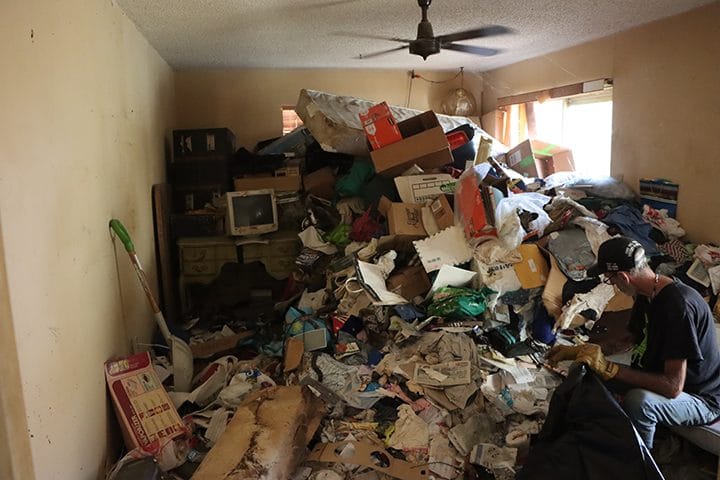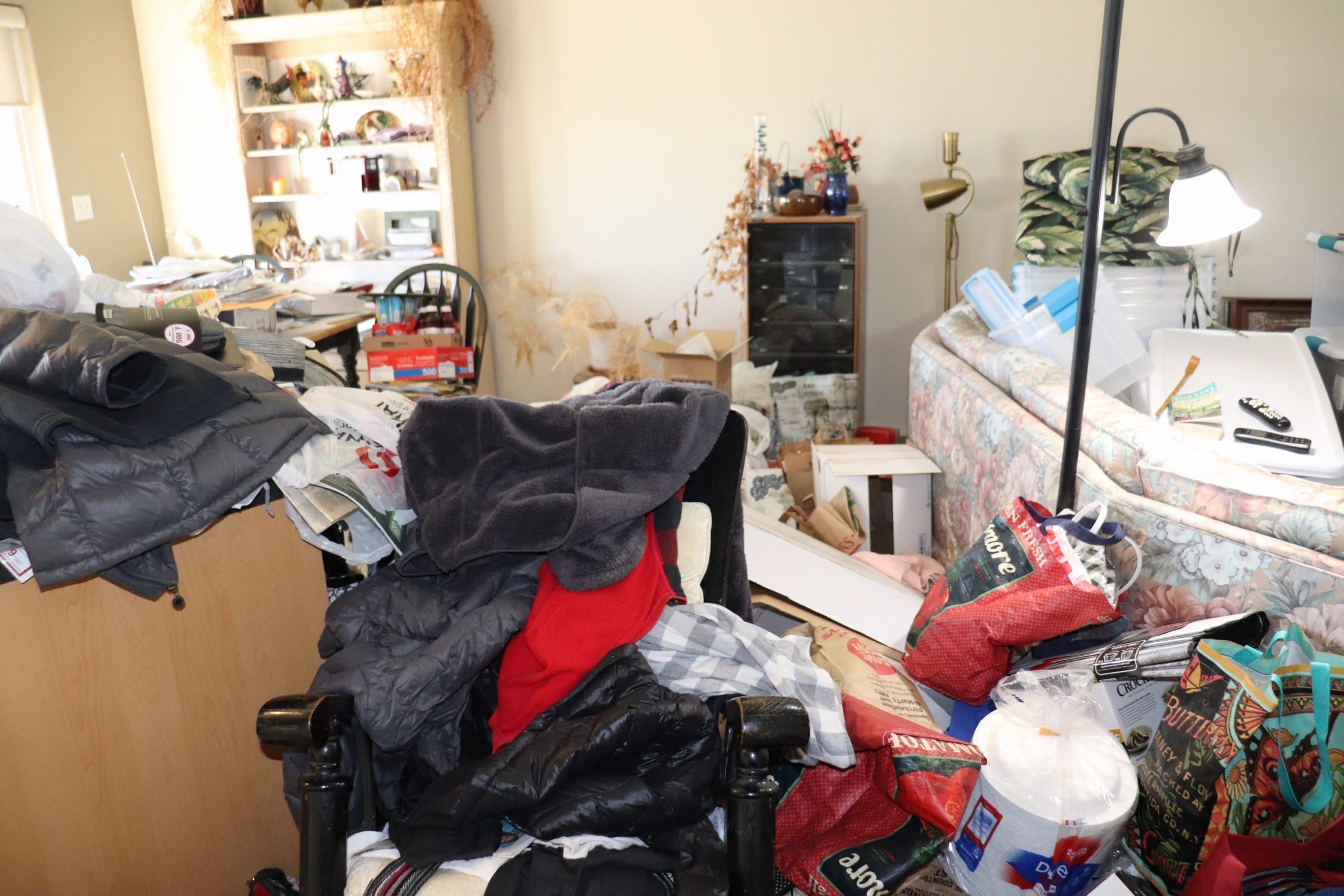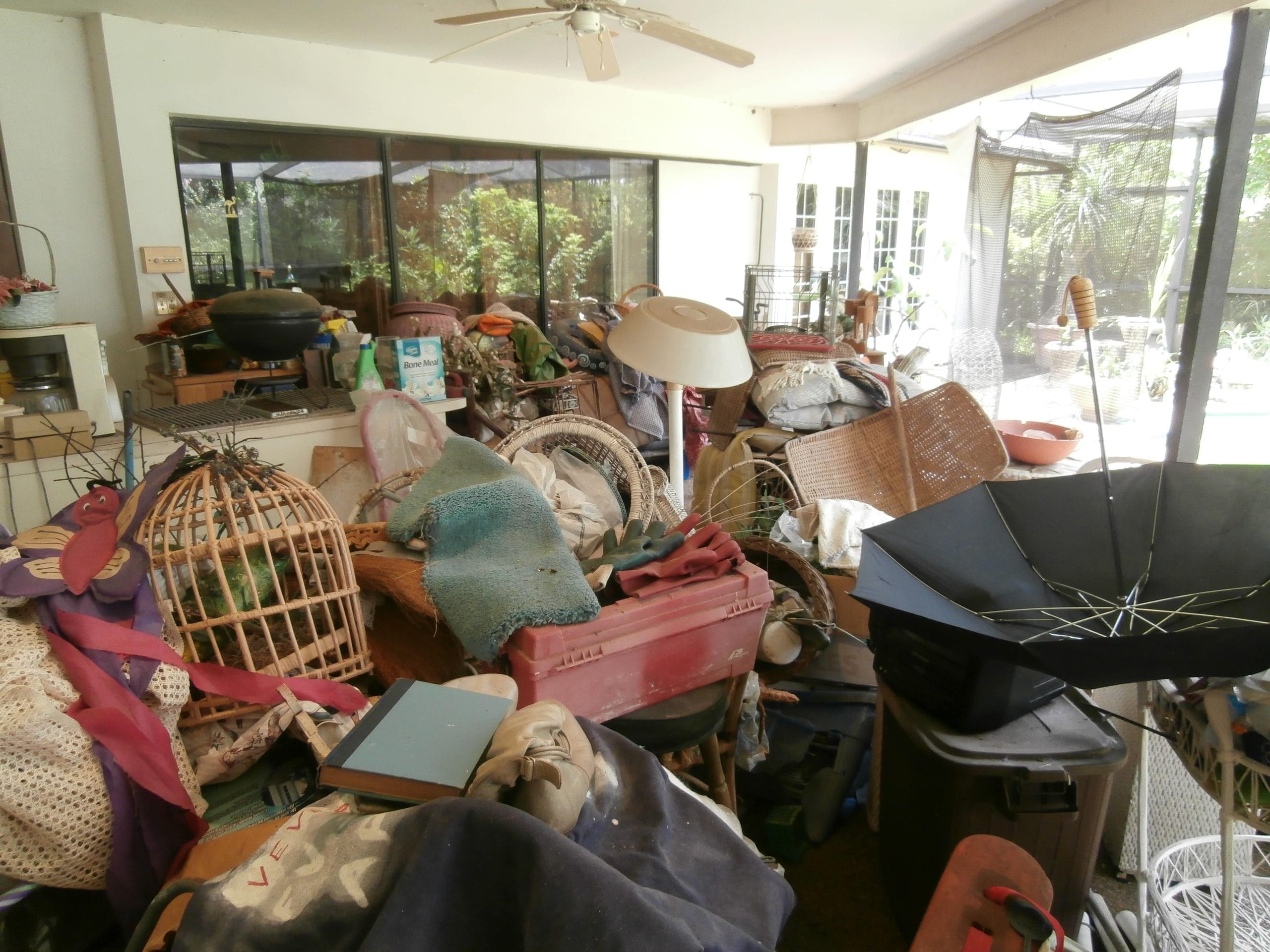Overcoming the Hoarder Mentality
Most people are familiar with the term hoarding. Whether they read about it online or in a magazine, or they saw the eponymous television show, they understand at least the basics of the issue. Hoarding is a disorder that will lead to serious problems in a persons life the longer they hoard. It can cause problems not just for the individual, but also for their family members, friends, and neighbors. Lets take a closer look at hoarding, what it means, and some of the things that cause people to hoard in the first place. Well also explore a few cases of hoarding turned deadly.
What Is Hoarding?
A hoarder is someone who suffers from an inability to get rid of possessions, even when those possessions have no value. They continue to bring more and more items and materials to their home to their detriment. They may have entire rooms that are filled to the brim with items, making it difficult or impossible to use the room. Hoarders dont always keep all of their possessions inside either. They could have cars, parts of cars, appliances, etc. sitting outside and filling up their yard. For a hoarder, its not about having a precious collection of things that are valuable or that hold real, deep memories. Its more about quantity than quality. Hoarders never have enough, and their mind starts to believe that everything they have is necessary to their happiness.
Signs and Symptoms of Hoarding
Problems with hoarding tend to start small, and its easy to miss the signs. However, someone who has a hoarding disorder will start to have more and more problems as time goes on. Clutter builds and they continue to bring more and more possessions into their homes.
Excessive Acquisition
Someone who hoards is always on the lookout for more materials to bring into their home. They acquire items they dont need, and for which they dont have enough space. In the mind of a hoarder, theres no such thing as having too much, even if they dont have room to walk through their house or even sleep in their bed.
From Clutter to Utter Chaos
When someone starts to bring in too many items, it leads to disorganization and piles of clutter, such as paperwork, clothes, books, newspapers, etc. There may also be a buildup of trash in the home, which leads to unsanitary living conditions. Eventually, they might even have trouble properly functioning and keeping themselves and others safe in their home.
Rita Wolfensohn and Son
Rita Wolfensohn, a legally blind elderly Brooklyn resident, was also something of a hoarder. It turns out that she was living with the corpse of her son for nearly 20 years, and she had no idea he was missing. She thought hed moved out of state. The death went undiscovered until Ms. Wolfensohn was hospitalized. A relative went to the home to pick up some of her belongings and discovered the body in an upstairs room. Police believed that because of the state of the house she had no idea he had died and since she was legally blind, she may never have seen him even if she made it to that part of the house. It makes you wonder what she thought could have happened to her son for so many years, never realizing that he was just a few dozen feet away.
Difficulty Parting with Items
People with hoarding disorder will often hold onto items because they feel that they might be needed in the future, or that they are irreplaceable. Other times, people keep items because they have a sentimental attachment. While keeping some pictures and keepsakes is normal, a hoarder might keep a newspaper that their family member read while they were at the house visiting three years ago. They might attach sentiment to items that most people wouldnt. Some hoarders grew up lean, meaning that they didnt have a lot of money or possessions. Now that they can buy, find, and hold onto things, thats what they do. However, they go overboard to the point that their homes become disaster zones. Hoarders often feel safer when they are surrounded by all of the material they have saved. When they dont have those items, they may feel afraid and unable to relax. They might exhibit aggressive behavior toward anyone, even family members, that try to talk to them about hoarding or that try to throw anything away. Below is an example of two hoarders who didnt want to get rid of anything and what it cost them.
Homer and Langley Collyer
If you thought hoarding was a new phenomenon, you would be wrong. For this case, lets travel back to the 1940s with Homer and Langley Collyer. These brothers were millionaires and were the epitome of the word eccentric. Both of the brothers were hoarders, and both enjoyed creating traps to keep intruders away from their home and their treasures. However, the booby traps didnt end up catching a thief. Instead, one of the traps ended up killing both of the brothers in 1947. Police received word that there was a death in the Manhattan home. They were unable to get in through the bottom floor, so they had to make their way in through a second-story window. When they got inside, they were greeted by a massive mess that included all of the newspapers and other hoarded items. The cops couldnt find anything. For weeks, they searched through the property and even started searching for the brothers outside of the home since they couldnt find them. It was only after a second search of the home that the brothers were found, just a few feet from one another, and both buried by their own garbage.
The Problems with Hoarder Houses
Although people should have the freedom to do what they want with their lives, the line is drawn when it comes to health and safety. Hoarding houses present a danger not just to the hoarder, but to everyone who lives in the house, visits, or even those who live nearby. Below are some of the common risks that hoarder houses pose.
Fires
Hoarding houses are essentially fire traps. In these homes, there is often a lot of paper and other flammable materials that act as literal fuel for a fire. A small fire can grow and get out of control quickly. Because the homes are often crowded with belongings, it means that it may not be people for people living in the home to make it out of the house safely. Hoarder homes are often improperly maintained, as well. This could mean that they dont have active fire alarms in them. The people in the home might not even realize there is a fire until it is too late.
Burning Down the House
Heres a story from 2016. Maureen and Roger Firestone, an ironic name for this sad case, were both hoarders. One of their cardboard boxes ended up catching fire, which set other items in the room ablaze. According to witnesses, Roger tried to put out the burning box on his lawn and then ran back into the home to get his bedbound wife. Both died in the fire, but the two care providers who worked for them were able to escape.
Pests
Due to the clutter and unsanitary conditions of the home, it also means that it is often a breeding ground for rodents, ants, roaches, and a host of other pests. Who knows what might be living in the mess. There could be colonies of rats in the bedroom, a nest of snakes in the overfilled barn, and fleas that constantly bite you through the night when you try to sleep.
Air Quality Issues
The air quality in these homes tends to be rather dismal, too. They arent clean, there could be decaying food, decaying animals, and in some cases, even decaying humans laying somewhere amidst the trash. The quality of the air in these homes tends to be abysmal. Depending on the state of the property and the items that are cluttering the space, cleaning these homes might require the use of hazmat suits and masks.
Mold and Mildew
Mold and mildew could grow in the homes, as well, which can make the living conditions even more dangerous. Breathing in mold spores, particularly toxic mold, is dangerous. Yet, some people live in these conditions, sometimes for years. They may be suffering from illnesses and various health conditions because of the state of their home. Hoarder homes are unsanitary and dangerous. The people who live in the home are in danger, but so are their neighbors. The pests migrate and fires spread, for example. They can eventually lead to legal problems that could include eviction or forced removal of the items. Hoarding is a serious problem, and as you will see toward the end of the article, it has turned deadly on more than one occasion.
What Causes Someone to Become a Hoarder?
Why do some people become hoarders? It is currently believed that it could be genetic factors, brain functionality, or certain stressful events in a persons life that cause them to hoard. Typically, this will begin when the person is between 11 and 15, but it could happen much later in life.
Understanding the Hoarding Disorder
Unfortunately, its not entirely clear what causes some people to develop a hoarding disorder. Often, someone who suffers from hoarding disorder will also experience other mental health issues. This can include anxiety, obsessive-compulsive disorder, ADHD, and depression. There are some potential risk factors for developing hoarding disorder. Often, people who are hoarders also have trouble making decisions. In some cases, there may be a family history of hoarding. Someone who has a mother, father, or grandparent that hoards might become a hoarder themselves. It could be genetic, or it could be that they were raised in an environment where hoarding was seen are normal. As mentioned, some types of stressful life events might cause someone to start hoarding. Examples of these events might be losing previous possessions in a natural disaster, not having enough growing up, going through an eviction, getting divorced, or losing a loved one. There are many potential causes, not just a single reason why people hoard.
Animal Hoarding
We all know the cat lady from pop culture. However, animal hoarding is a serious problem that affects. Each year in the United States alone, close to a quarter of a million animals become part of a hoarders menagerie. The types of animals can vary from cats to dogs, birds, rodents, reptiles, and even farm animals. Of course, this doesnt mean that everyone who has more than one or two animals would be considered a hoarder. There are signs and symptoms of animal hoarding that are similar to other types of hoarding, as well as some unique traits. For example, someone who hoards animals might have a home thats covered with animal feces, vomit, and urine. Often, there will be a strong ammonia smell. The home will often have fleas, and it could be a haven for other vermin. The hoarder will tell people that their animals are happy and healthy, but the truth of the matter is much different. They are often underfed and could be suffering from illnesses. The animal hoarder wants the animals but doesnt want toor have the capacity toprovide proper care for all of them. As with other types of hoarding, when someone continues to bring in more and more animals to their home, its generally mental and emotional. They cant help themselves, and they often dont truly realize the scope of their problem.
What Can a Hoarder Do?
Someone who hoards and knows they have a problem will want to speak to a mental health professional about their condition. If you have a loved one who is a hoarder, you will want to do the same. Depending on where you live, the community might have agencies and groups that can help with hoarding. In cases where you have a loved one whose home and property has become dangerous to themselves or the safety of others, getting in touch with the local authorities might be the best solution. Depending on the situation, this might mean contacting the fire department, police, public health agencies, child protective services, or animal welfare services.
Resources:
https://www.ranker.com/list/hoarding-deaths/jacob-shelton
https://www.psychiatry.org/patients-families/hoarding-disorder/what-is-hoarding-disorder
https://www.mayoclinic.org/diseases-conditions/hoarding-disorder/symptoms-causes/syc-20356056




